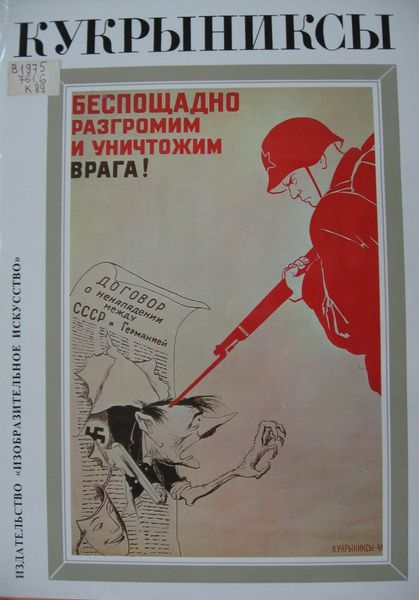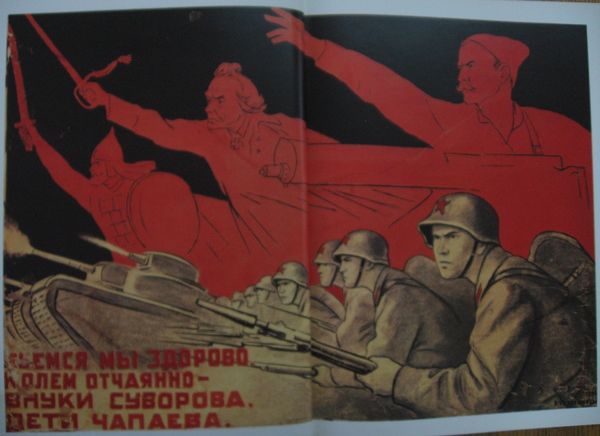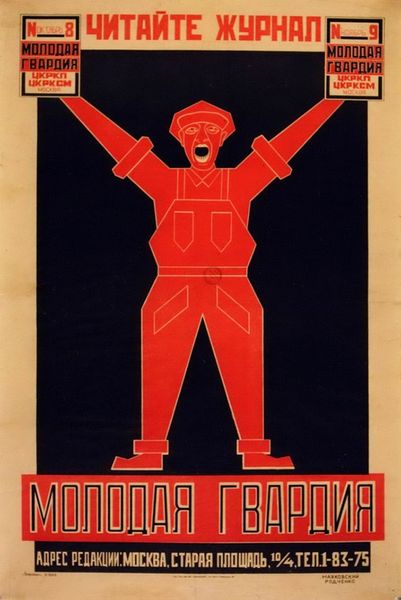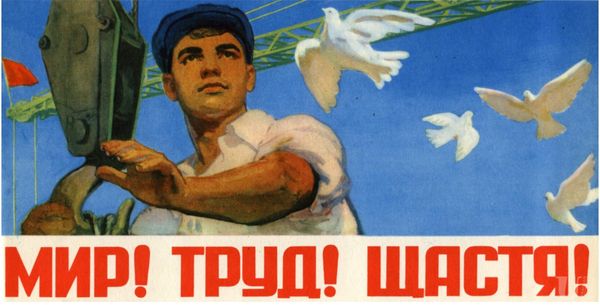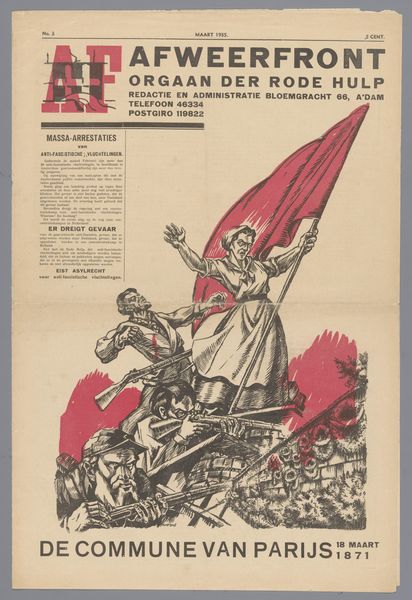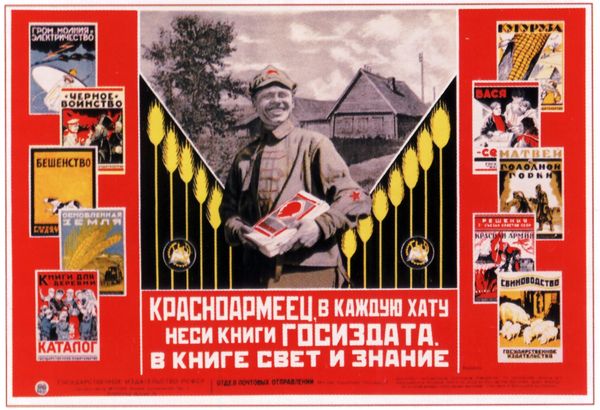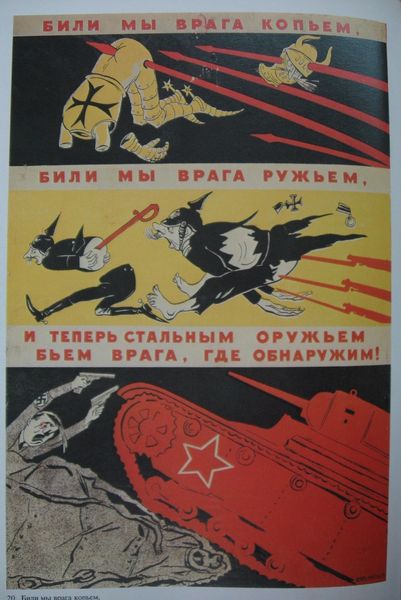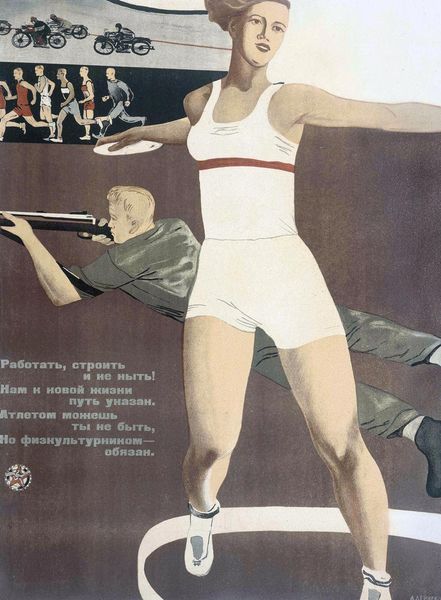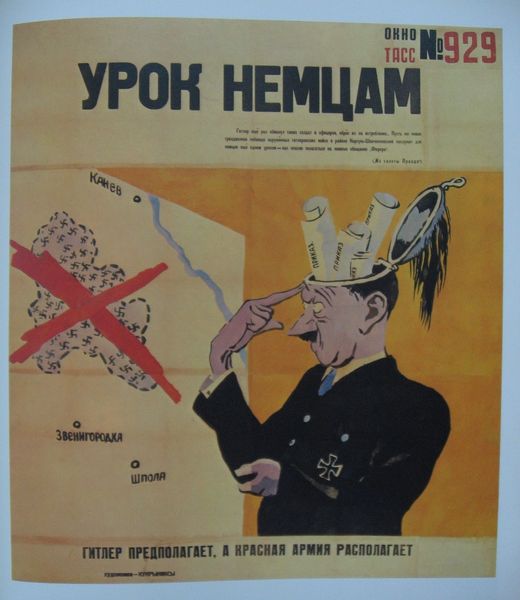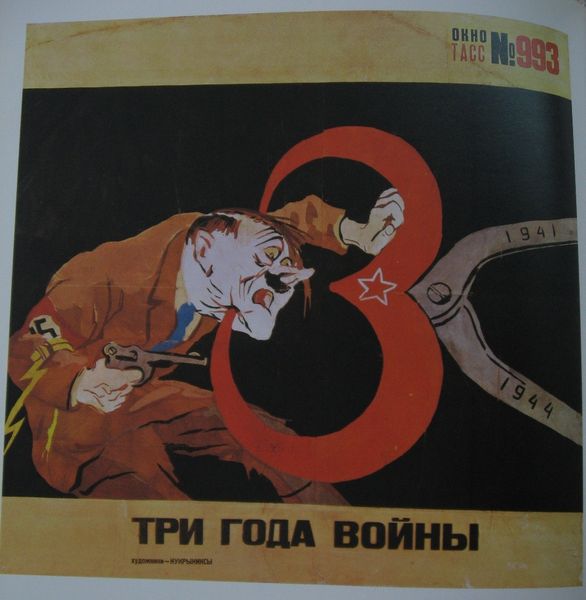
mixed-media, photomontage, poster
#
portrait
#
mixed-media
#
constructivism
#
soviet-nonconformist-art
#
figuration
#
social-realism
#
photomontage
#
poster
Dimensions: overall: 21.3 x 28.1 cm (8 3/8 x 11 1/16 in.)
Copyright: National Gallery of Art: CC0 1.0
Curator: This photomontage before us is entitled "The Female Worker in England," created by Gustav Klutsis sometime between 1929 and 1930. The composition is primarily mixed media, resembling a poster designed with principles rooted in Constructivism. Editor: Striking. The red immediately grabs you. Then the figure of Lenin looms above that river of faces—a slightly menacing god figure, doesn’t he appear a bit... stern? Curator: Well, this was a period heavily influenced by Soviet Nonconformist Art and Social Realism, where imagery often served political purposes. Editor: Yes, the symbolic weight is quite intense here. The winding band of figures feels like a path or a collective will, pushing upward toward Lenin. All that anonymous mass supporting this one towering figure. A classic socialist image, isn’t it? The leader and the people. Curator: Indeed. The power dynamics at play are evident, with Lenin seemingly leading the masses, or perhaps observing their struggle. It’s not clear if the artist sought to depict authority or the power of the people. Editor: But that figure... it dominates everything, almost oppressive against that blood-red background. I am curious as to the specific context of why this was made. Why focus on a female English worker in particular? Curator: This poster appeared at a time when the Soviet Union was attempting to appeal to the international working class. By portraying an English worker, and especially a female one, Klutsis seeks to bridge cultural and national divides, illustrating the purported universality of socialist ideals. There were huge campaigns across the U.S.S.R promoting this specific topic. Editor: Ah, a global revolution symbolically depicted. Though for contemporary eyes, those sorts of images always land as somewhat dystopian, don't they? But perhaps, at the time, this bold, almost crude visual language was inspiring. Curator: Its purpose was to inspire solidarity and action, regardless of its effect on later interpretations. I always find it useful to study the poster art from the U.S.S.R. precisely for what they illuminate regarding the relationship of imagery and state power. Editor: Absolutely. It reveals how symbols get weaponized, really. Art like this forces us to reflect on that tension, the space between propaganda and genuine ideals, across generations.
Comments
No comments
Be the first to comment and join the conversation on the ultimate creative platform.
